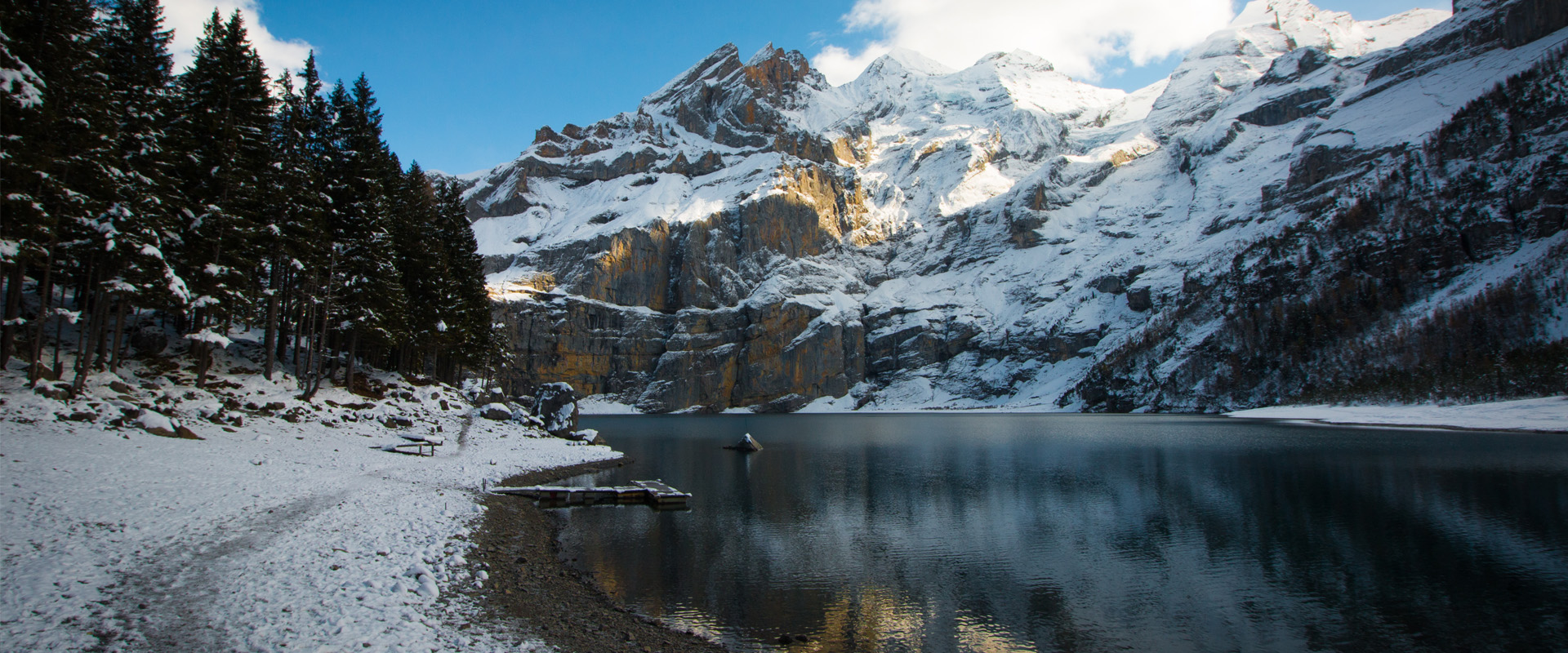Vacationing in central Switzerland in November was a gamble and perhaps more challenging than it was worth due to various closures across the board, including shops, restaurants, tourist boards, but most importantly transportation and cable cars. Business just isn’t that great this time of year, so Switzerland in-part closes down to prepare for the flurry of skiers in the new year.
Cable cars in the Swiss Alps are the lifeline of both the skier and the hiker. Without them, reaching the slopes and trails that Switzerland is famous for is virtually impossible, especially in the Interlaken region where I stayed. So, to take full advantage of my out-of-season getaway, I did extensive research and managed to uncover some awesome things to do outside of the usual Swiss holidaying agenda.
Ride to Jungfraujoch - Top of Europe experience
The mountain railway comes to the rescue just as the cable car bows out for the season. Some trains (but not all) still operate in this unlikely month of seemingly weak tourism, one of which climbs into the skies to Jungfraujoch.
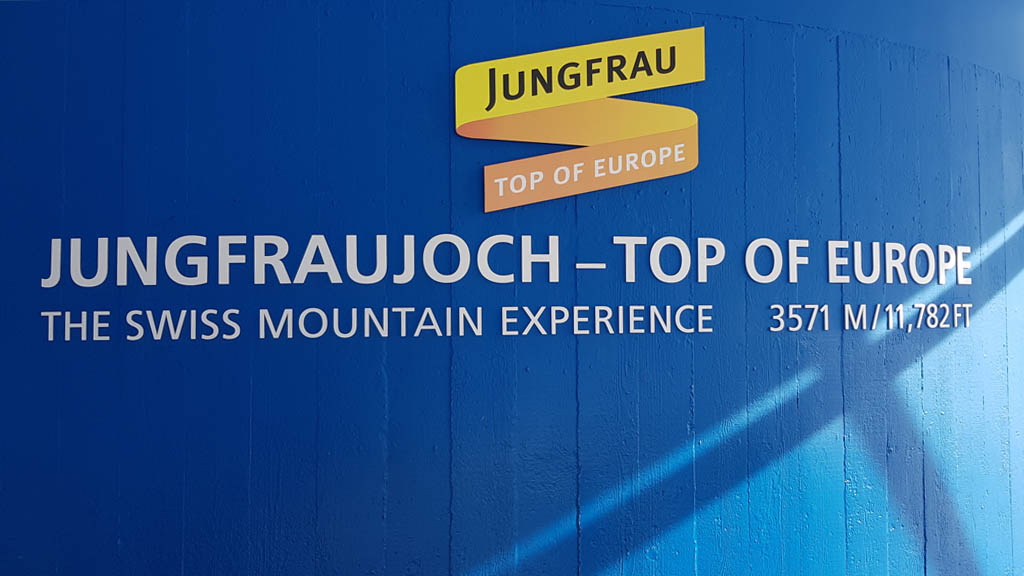
Jungfraujoch is confidently dubbed the ‘Top of Europe’ (don’t be fooled - it’s far from the highest point in Switzerland, let alone Europe) and offers travellers who get a kick out of high altitudes and blistering mountain winds a viewpoint over a massive portion of the Swiss Alps by use of an outdoor deck.
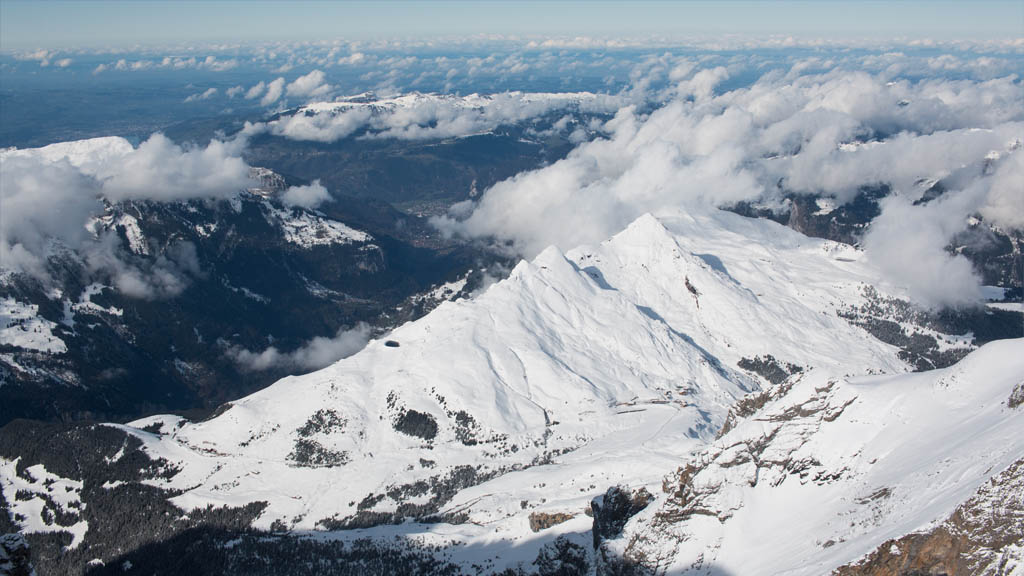
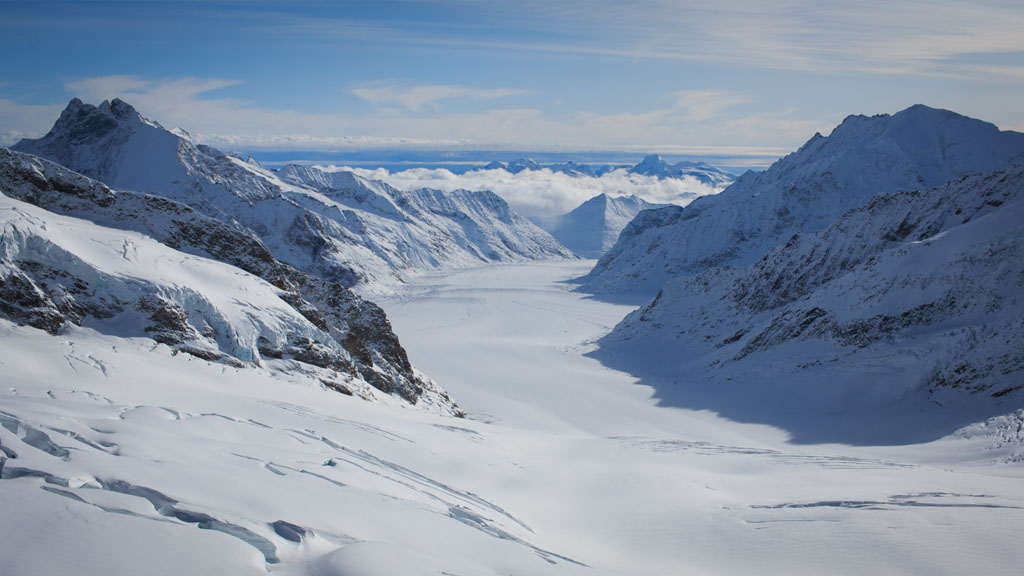
A visitor’s centre accompanies the platform and features all the bells and whistles a money-making machine such as this would see - various gift shops, restaurants and cafes, as well as a nifty ‘Ice Palace’ and the Lindt Chocolate Shop also confidently dubbed the ‘world’s highest chocolate shop’. These guys are all about the ‘highest’ and the ‘top’, always raising the bar! The bar… of Lindt chocolate? I’m sorry. Let’s move on.
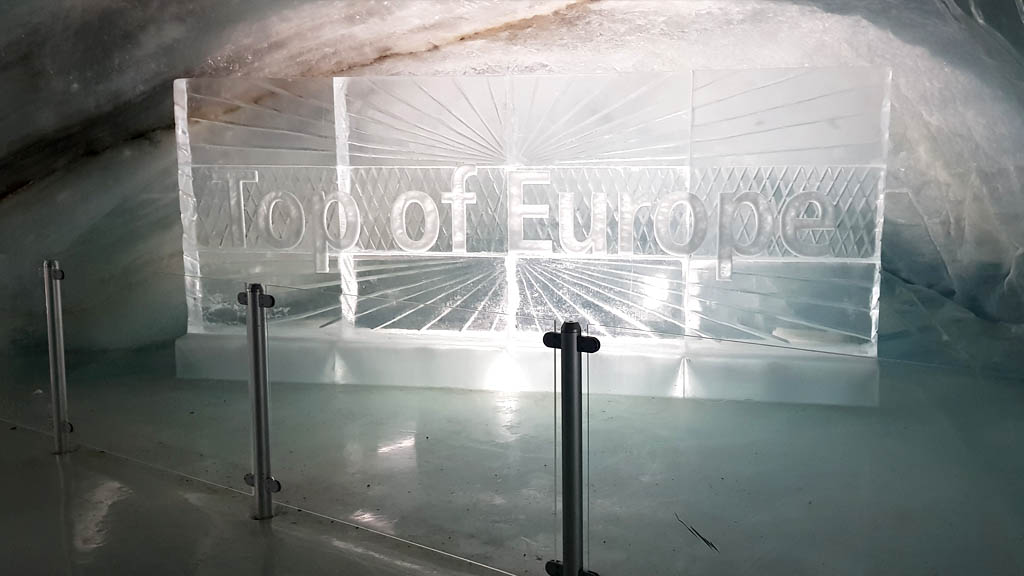
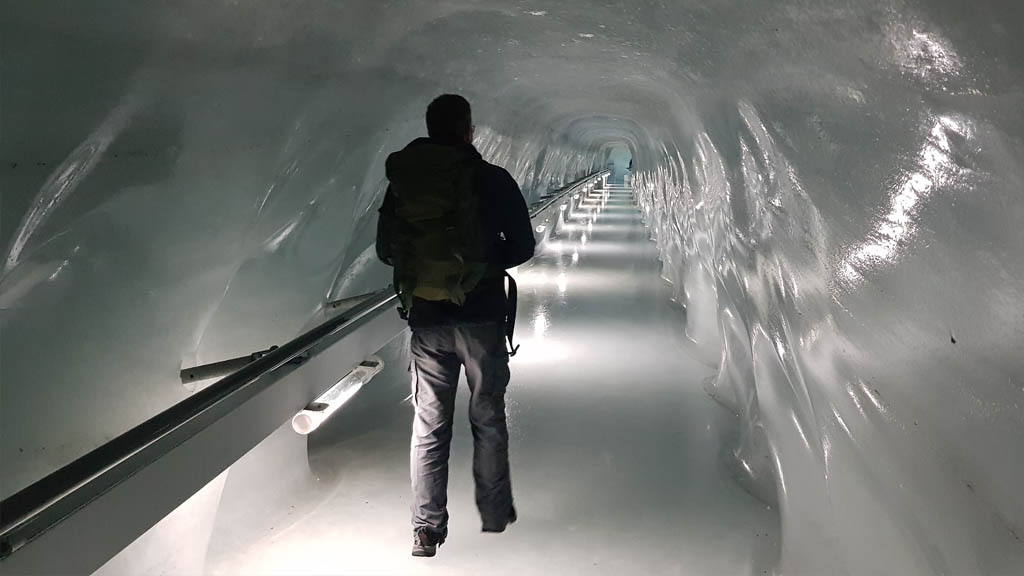
Part of the Jungfrau railway tourism network, a ticket to Jungfraujoch from Lauterbrunnen costs CHF 163 (‘CHF’ being the Swiss currency), roughly translating to £133. Like I said, Switzerland is frickin’ expensive. There is a silver lining though, as the deck with the viewpoint, the Ice Palace and other various exhibits are included in the ticket price, so think of it as a day trip as opposed to a mere railway ticket.
The views over the Swiss Alps are extraordinary, with claims that on a clear day it’s possible even to see southern Germany. Apart from that, it’s troubling to justify the price, so weigh this up for yourself.
Thunderous Trümmelbachfälle waterfalls
Nestled in the valley between Lauterbrunnen and the mountain-top village of Mürren is a network of wonderful waterfalls known collectively as Trümmelbachfälle. These waterfalls flow inside a series of caves within the mountainside and access to them involves taking an elevator or stairs up and into the mountain.
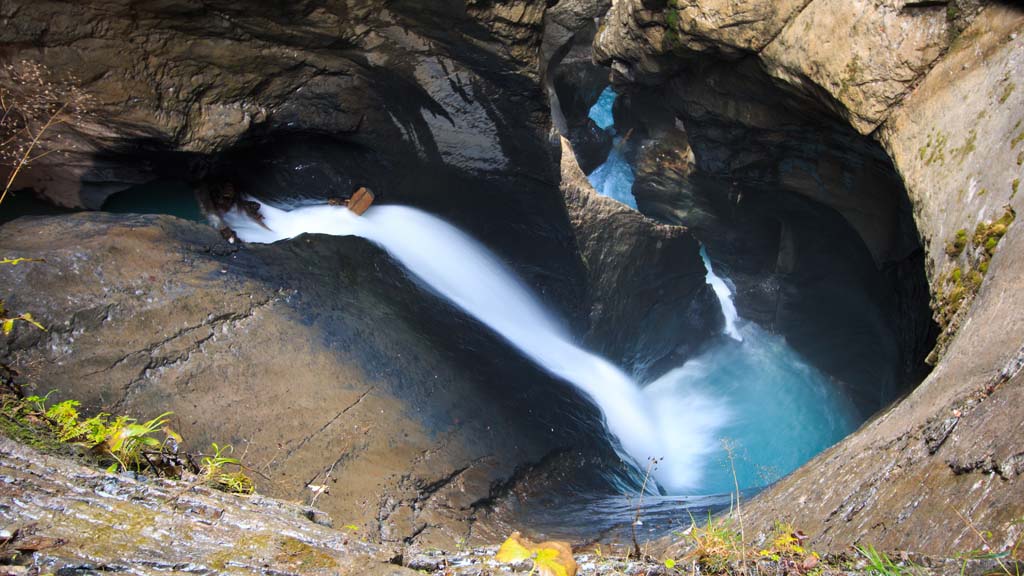
The gushing Trümmelbachfälle falls make up an astonishing natural spectacle sure to at least dampen your choice of clothing that day. The network can take anywhere over 20 minutes to explore and costs the far more reasonable sum of CHF 11 - around £9, for an adult ticket.
Easy hiking to stunning Oeschinensee
Time to lace up those hiking boots, pop on a thick pair of gloves and go stomping through a winter wonderland, for not all decent trails in the area require a cable car, helicopter or jetpack.
Oeschinen Lake is a pristine, near-circular lake embedded in the mountainous Swiss landscape. Walking to it takes a mere 1-2 hours from the Kandersteg Oeschinensee gondola car park with some dreamy winter scenery to keep you company along the way.
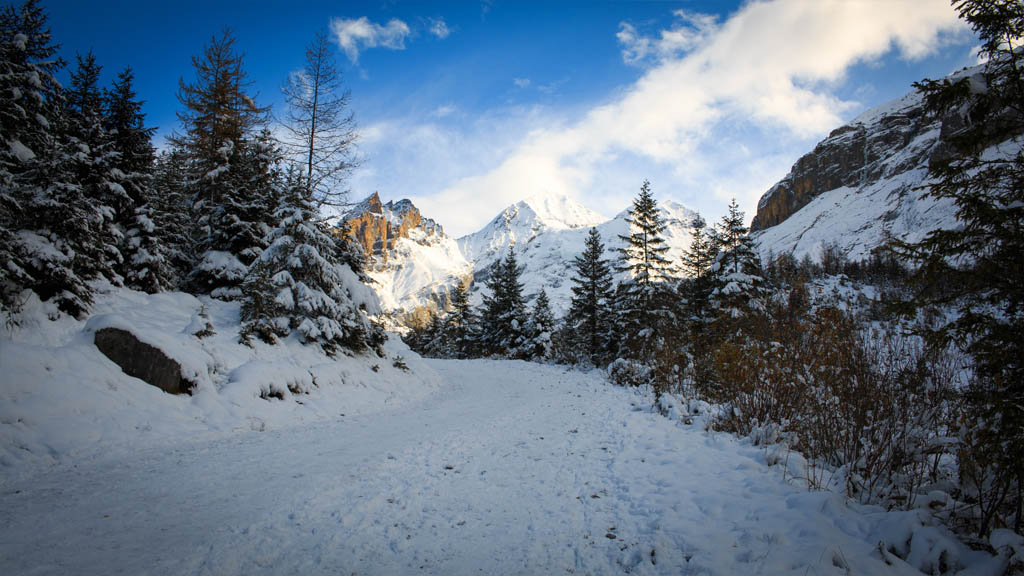
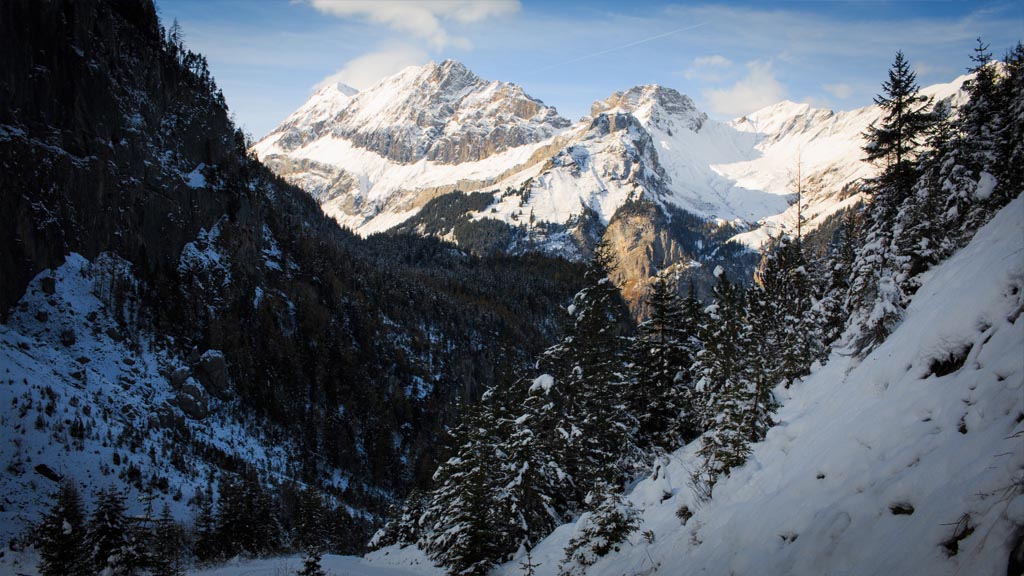
The trail to the shores of Oeschinen Lake is straight-forward and easy to navigate, even following snowfall, with only moderate inclines. It’s essentially just the road used by visitors to reach the lakeside Berghotel Oeschinensee.
This beautiful example of a pristine glacial lake may keep you busy on arrival, with plenty to see around the shores. More adventurous explorers needing their scenic fix may wish to continue following the main path past the hotel, past the lake itself and up into the mountains.
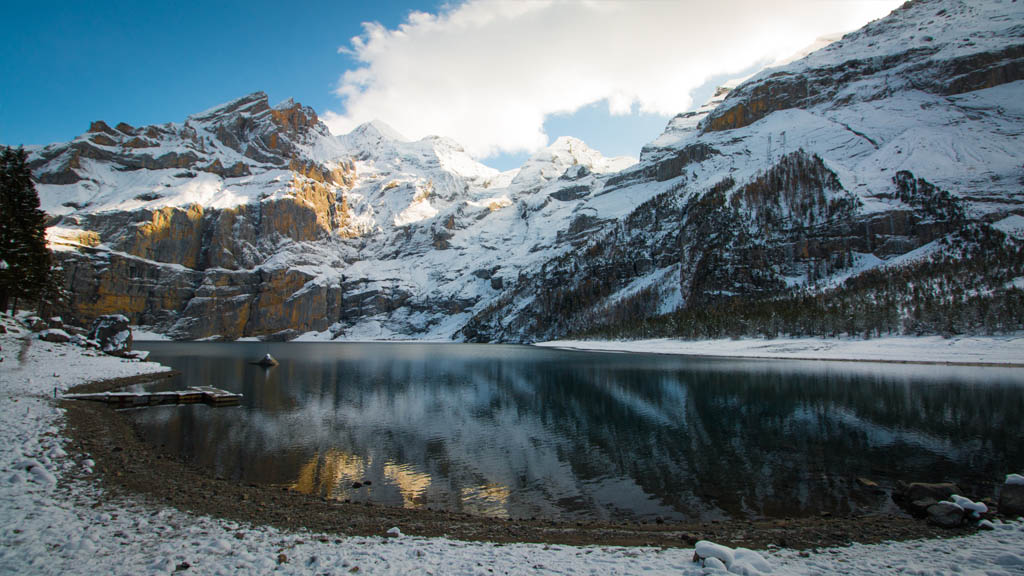
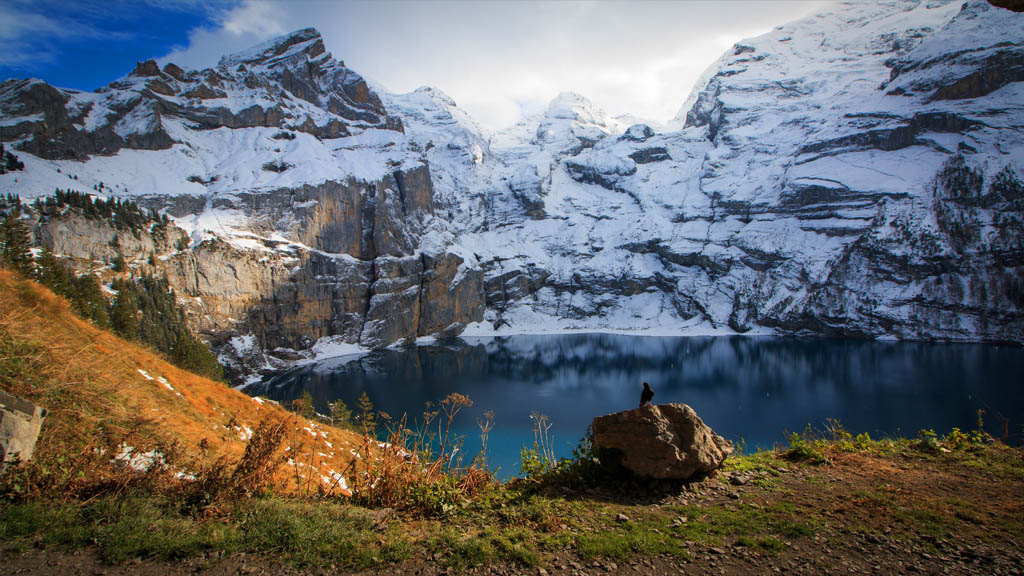
Arrive at the Kandersteg Oeschinensee gondola car park and use a hard or digital map to follow the roads past the signs to the lake. Despite access being ‘closed’, the roads are still of course there to walk on. Read more about my hike to Oeschinen Lake here.
Grab yourself stereotypical Swiss goods in Interlaken
Leaving the mountain trains and hiking behind, sometimes all you need from a day is some holiday retail therapy… especially if you’re into fine chocolate, immaculate watches, authentic Swiss army knives and adorable cuckoo clocks. The Swiss don’t stash away their iconic products, far from it - they’re primed and ready to make the journey back with you in your suitcase.
Interlaken is a traditional tourist hub that serves both the typical Swiss holiday-goer looking to invest in all sorts of souvenirs as well as the gateway to the Alps for the scenery we came for. Gift shops and chocolatiers are present in strong numbers, especially the chocolatiers - you’ll be hard pressed to walk out of Interlaken without a bag bursting full of sugary treats. The gift shops tend to offer up the aforementioned spread of typical Swiss goods as well as the usual holiday souvenirs, from t-shirts to fridge magnets.
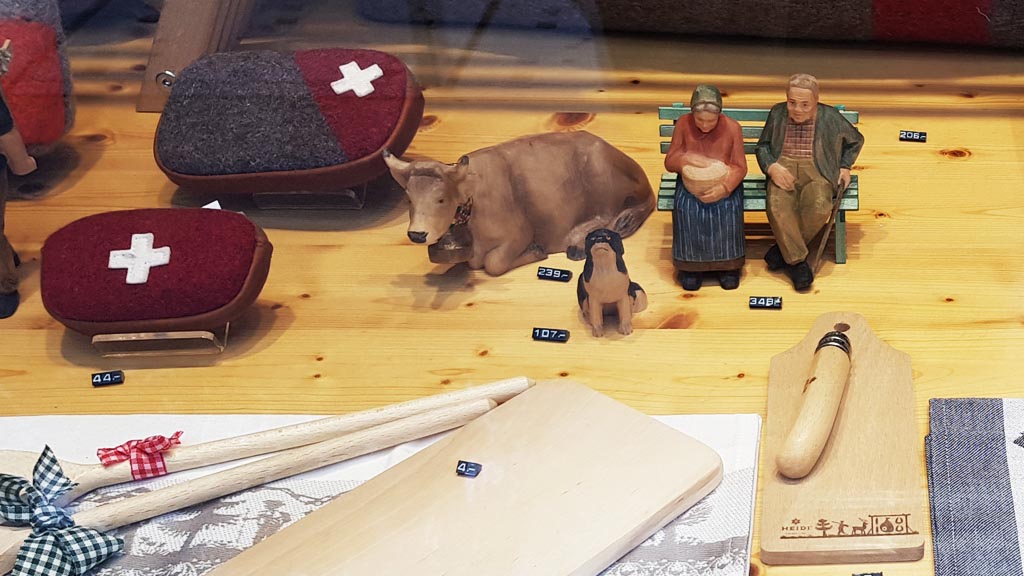
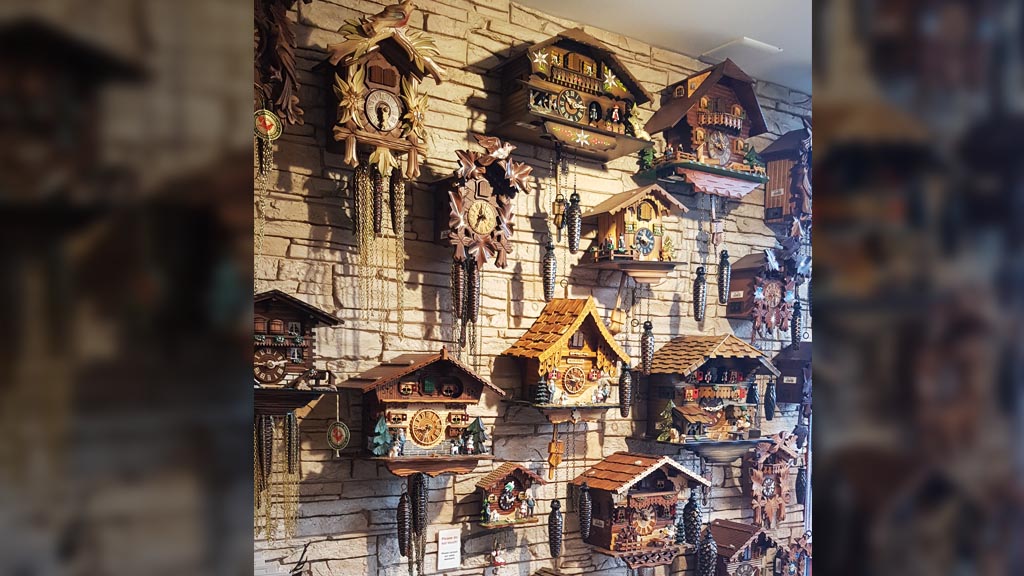
Along with souvenirs and sugar-stuffed delights, the usual cafes, restaurants and grocery stores can be found and are open for business.
Where should you stay, and how much will it cost?
Being the tourist’s gateway to the Alps, Interlaken has no shortage of accommodation. I stayed at the Alpenrose Hotel and Gardens, situated south of the town centre and nestled in amongst other hotels and houses. The single room at this 3-star hotel cost £235 for 4 nights, or £58 per night, and came with a private bathroom and a free, very Swiss continental breakfast each morning.
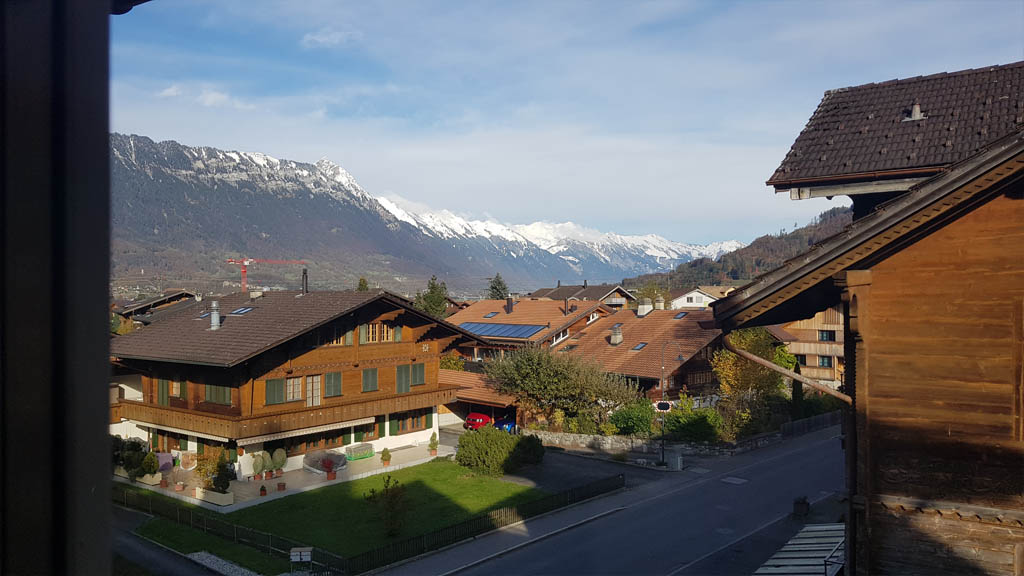
There are two takeaways from this: whether the cost of the 3-star room, which was cheaper than other 3-star options at the time, falls in-line with the notion that Switzerland is an expensive location to visit, and whether the price is fair due to availability. As I said, accommodation isn’t short in Interlaken, but accommodations that are open for business in the quiet period running up to Christmas is another thing.
Bear in mind this is November - the hotel has chosen to keep their doors wide open despite low demand (there certainly weren’t that many guests pottering around) and the room cost, having checked, was only marginally lower than an identical booking in the peak months of July/August.
The room itself was incredibly mediocre when it came to comfort, space, adequate temperature, facilities, complementaries and decor. It was long and narrow, like sleeping in a painted-up shipping container.
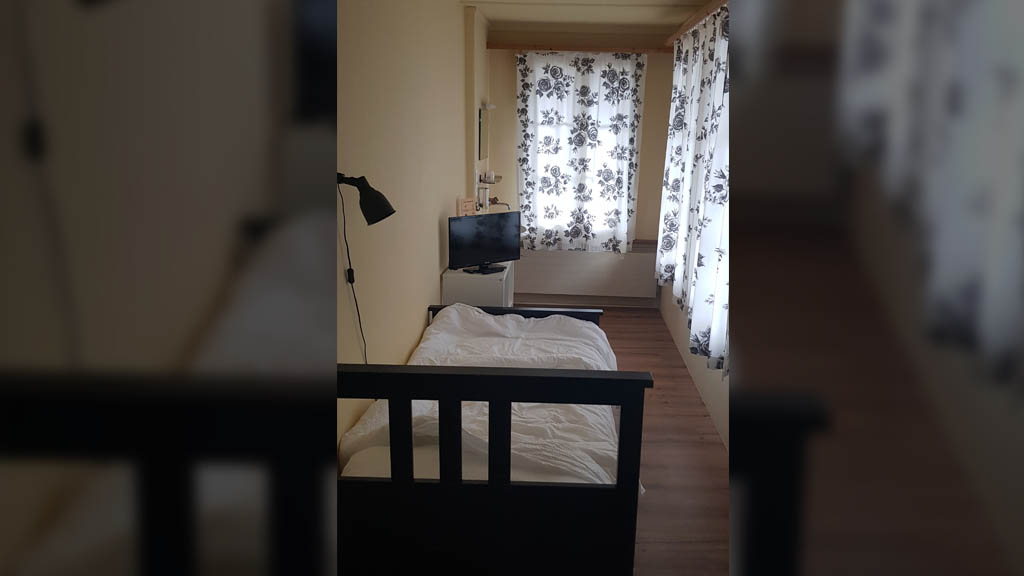
Put all of these considerations together and it’s lacking value for money during this off-peak time, and lines up with the Swiss’s desire to bleed your wallet dry (just kidding… sort of). I’ve stayed in some fairly classy, 4-star joints in Spain on various winter Mediterranean retreats and they were cheaper, sometimes considerably. Spain isn’t Switzerland and Spain is, by all accounts, more cost-effective - of course, but it’s worth noting that the theme of your purse taking a pounding on a Swiss holiday extends to the bookings and not just while you’re there.
And where should you eat?
Switzerland isn’t known for a spread of dishes nor a particular cuisine, but popular culture suggests they’re pretty big on their fondue. Hotel restaurants offer the classic Swiss fondue experience (as did the Alpenrose Hotel), but in order to feast on one of their nation’s proudest traditions, my purse would’ve had to have taken another beating.
I decided against the fondue and instead rummaged through their tiny larder of exclusive Swiss dishes to discover another national speciality - the potato rösti, with ham and cheese… and a flag, which wasn’t edible despite my best efforts:
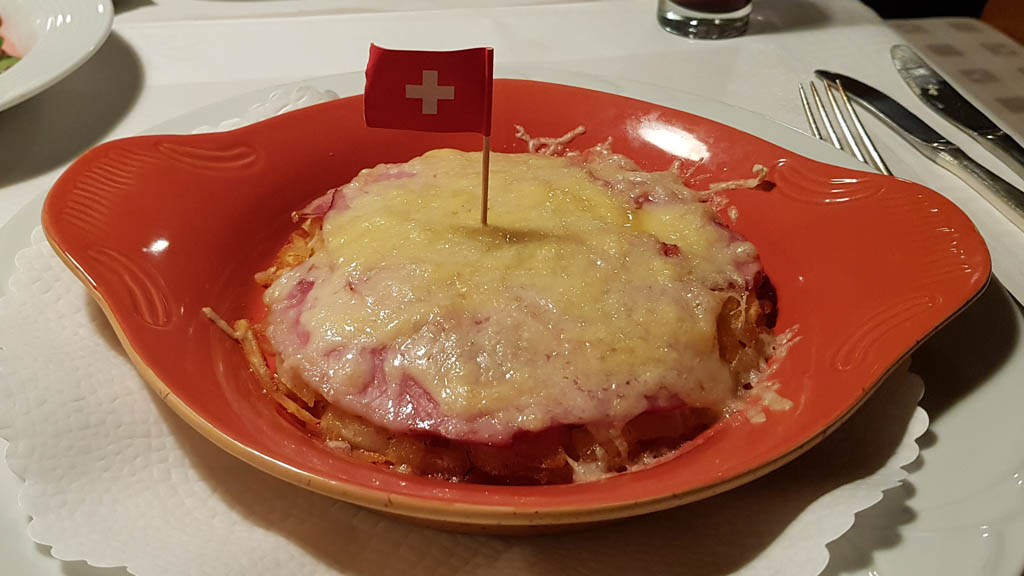
Apparently also a common sight at the Swiss family dinner table, this potato rösti was... pretty nice. Not a glowing review I’m aware, but with the price tag of £17 it’s hard to ramp up the excitement. Burgers, also featured on typical menus, share many of the rösti’s traits - common, simple, no thrills, expensive and comes too with a flag that I definitely didn’t try to eat:
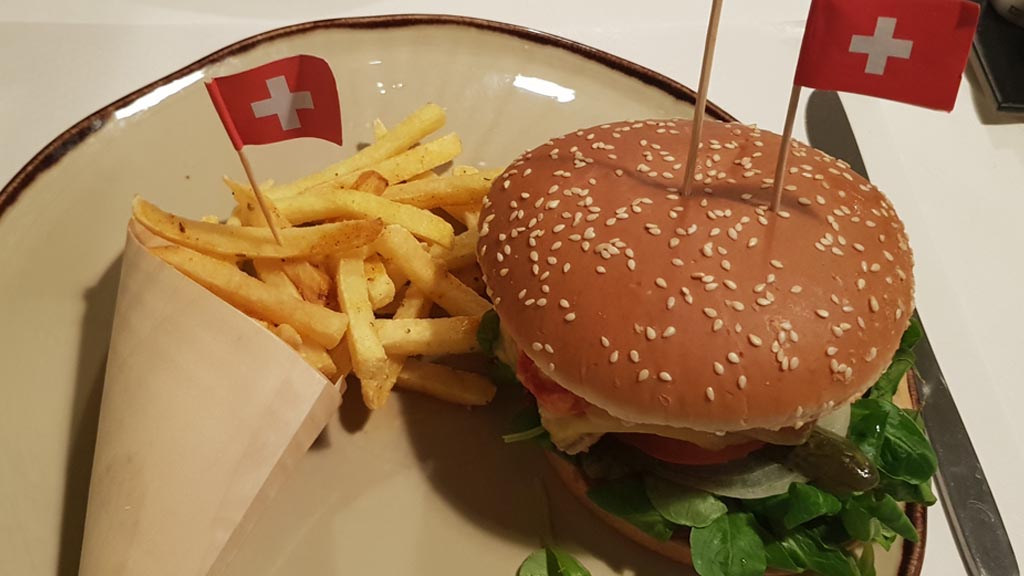
So, again - parting ways with many CHF banknotes to line your stomach seems inevitable, and this being the case it’s best to do dinner properly. In the south of Interlaken there is a pizzeria called Luna Piccante. I’m convinced that Italians who have migrated to Switzerland from across their southern border have heavily influenced Swiss dining, because the pizzas were absolutely gorgeous.
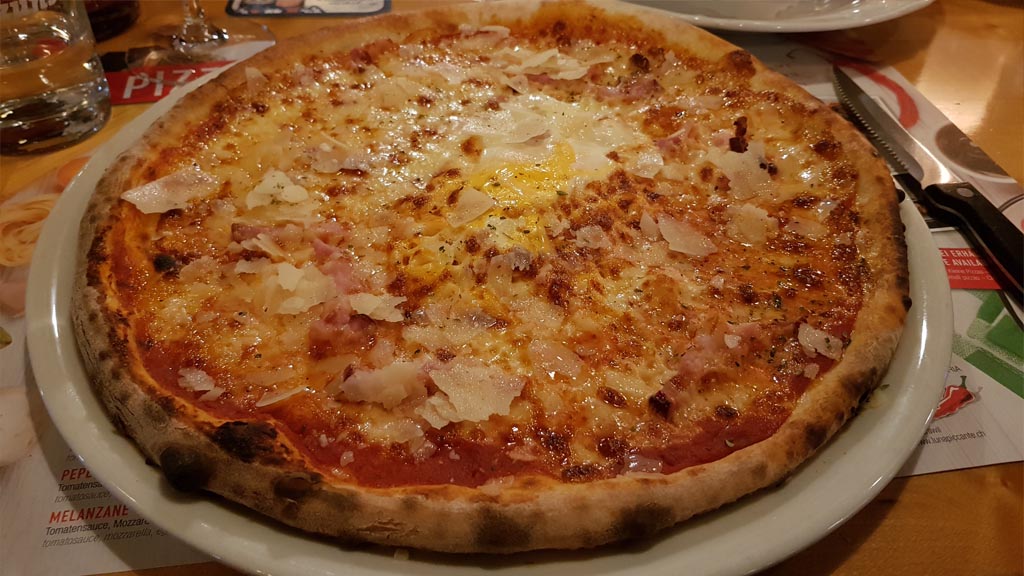
Luna Piccante served up a huge range of pizzas to choose from, harping back to the time I spent in Italy, including the ‘carbonara’ style of topping seen above. It was well and truly Italian down to the last shred of parmesan and the irony of indulging in expert Italian dishes over the border - and paying far more for it - isn’t lost on me. Like I said - if you’re going to have to spend around £20 for a single course, do it properly.
So, should you do the Swiss Alps in winter?
Instead of summer? I really, really don’t know.
The pot of pennies saved in booking a flight to Switzerland and staying there in November isn’t big enough to throw up a definitive answer. The cost of travelling on trains, buying meals, picking up cute souvenirs, and so on, is all much the same regardless of whether you wish to hike under glowing summer sunshine or tread through tons and tons of chilly winter snow. And if your main focus for a visit isn’t hiking or skiing, then a winter vacation is completely mad.
So what are you paying for? Well - a winter wonderland, which to some is all the motivation they need. There’s something strangely enchanting and heart-warming about losing yourself in the tranquillity of snowy mountains. Despite entire ski-lift closures, there’s still plenty of adventure to be had in the beautiful Swiss scenery which would suit amateur and keen walkers alike.
It’s generally less busy, far fewer queues and clearer roads, meaning it’s possible to fully immerse yourself in Switzerland without interruption. I love embarking on winter trips, not to avoid the cold weather back home, but to take advantage of the best trails and views without the hustle and bustle of peak-period crowds that come in the summer.
The downsides are obvious. Less light in the day (particularly a crucial factor when it comes to timing hikes), hotels and restaurants tend to close, and it’s almost no cheaper than going in the summer. So which is better? It really comes down to preference and expectation.


